Challenges Will Reward Your Longterm Scuba Diving Goals
by
Matthew Mandziuk
In life nothing good comes easy without a fight or working to earn it, unless you win the lottery. The same can be true moving through a more Progressive Scuba Diving training philosophy where the divers are taught a higher level of knowledge, skills and techniques. Your Personal Challenges Will Reward Your Longterm Scuba Diving Goals.
At DDS we pride ourselves on staying ahead of market trends and instead we lead the charge forward towards better diving. For nearly 20 years we’ve taught our open water divers about the benefits of learning and buying the right gear and the right skills and techniques after over 20 years of doing it the old school way.
We pride ourselves on teaching divers a different (better) way to do things at the open water level where they can move forward with better skills, finesse and discipline allowing them to struggle less, maintain the visibility of even the siltiest environments or most fragile coral reefs, while continuing forward progressing successfully into deeper, more advanced courses, environments and experiences with more comfort and efficiency as they challenge themselves with training that is more exciting, more disciplined, more regimented and more rewarding than some of the “more traditional” courses which have become stale or outdated as we power ahead into a new age of diving.
As human beings we can always learn more and the same is true in scuba diving, except most dive training has become outdated and boring. All divers should be more aware of their dive profiles, gas requirements with proper gas reserves built in, no stop time limits and what is happening within their bodies as they spend more time underwater and as they ascend or descend.
Many of these common concepts are lost on the masses because theory is passed over quickly as we tend to suffer from a condition that demands “instant gratification” and dive shops that depend more so now on eLearning doing the work of the instructor for the shops and instructors, so the personal element of sharing stories and experiences with the students is lessened (or in some cases completely lost as there is no classroom sessions), so the students don’t create an emotional bond with their instructors, classmates or Divemasters.

Train Hard
If divers took more time to learn about dive planning, gas calculations, gas consumption, decompression theory and dive sciences, they would be much more ready to take diving to the next level. This knowledge can help us not just in diving, but also in every day life.
Divers who are taught to manage stresses underwater are more able to handle the every day curveballs life throws at you on a daily basis, as well as how to focus better on challenging tasks, yet the number of divers who progress through Advanced and Rescue diver courses drops as students seem less engaged in some graphic regions than before.
Where a diver can go training wise and the training opportunities available to them make or break the likelyhood of creating a “Lifetime Diver”. If a diver only dives once a year or 3, they’re better off just doing Discover Scuba Diving Experiences.
A certified diver who goes from Advanced, Nitrox, Drysuit to Rescue is doing things better, but the key is to find a trainer who can teach you what you need to really know. If as a diver they tell you it’s okay to be standing, kneeling on the bottom, to rely on holding onto an ascent line and be vertical on an ascent or safety stop as you take up 6-7′ minimum of line with your fins dangling down kicking the divers below you, that’s okay to overweight yourself so you sink or that violating thirds (your gas rule you should be ascending at), that it’s okay to flutter kick and silt out the bottom, wear flimsy floaty plastic fins, split or hinge fins and have stuff dangling off you like a Christmas Tree, it’s time to find a new instructor.
A diver who progresses towards more foundational skills classes like our NAUI Intro to Tech program will have the chance to perfect themselves better than any recreational diver, regardless of if they ever become a tech diver or not, as Foundational Skills Development courses like “Intro” offer the most through and engaging training possible with a combination of dry land drills, confined water drills and open water dives.
Divers who learn the foundational skills to make themselves a better diver and put the time in to become proficient in all aspects of their diving often become a much safer, more aware diver with superior team diving skills, refined buoyancy, flawless horizontal trim, proper ascents and descents, better fin techniques (utilizing a modified frog as their primary kick, modified flutter, ability to turn 360 degrees and do a reverse frog kick to go backwards) rather than flutter kicks, and exceptional problem solving skills. You even master surface marker deployment, rescue techniques, valve or regulator failures and more.
Your biggest assets in diving are TIME IN THE WATER and BUOYANCY, BUOYANCY, BUOYANCY.
DON’T try and fast track your way through training. Learn the foundational skills, start diving in the proper gear, train and dive with divers who are better than you are.
NAUI offers the highest standards of any training agency in foundational, technical, cave and overhead training, which is the reason they’re our primary agency for those courses, but we offer training from several other agencies too.
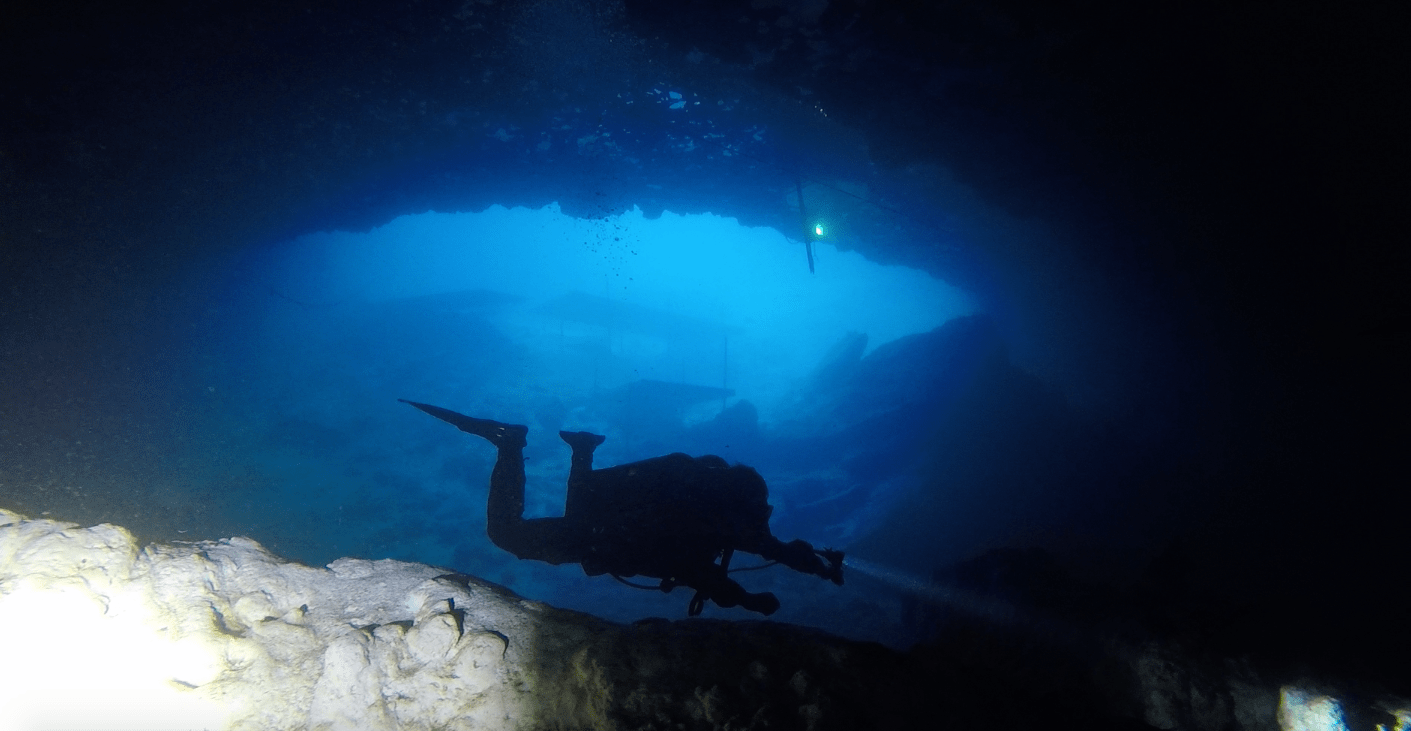 A properly trained DDS Diver working on trim and buoyancy during a NAUI Cavern/NAUI Intro to Tech Foundational Skills course.
A properly trained DDS Diver working on trim and buoyancy during a NAUI Cavern/NAUI Intro to Tech Foundational Skills course.
Fitness in Diving
Some new divers complain that lead weights and tanks are heavy, while more Technically Advanced Divers dive with Sidemount or back-mounted double tanks.
Diving with a drysuit creates more buoyancy, drag and resistance while swimming through the water, so there is an element of fitness required to dive. Carrying tanks to the water, stage bottles, rebreathers, camera systems, scooters, all these things have weight to them. It’s part of diving, so get fit and get ready to handle the gear you’ll be using.
To get more comfortable handling these items a strength building program to strengthen arms, legs and abs are very beneficial. 30 push-up’s a day, 100 ab crunches and a light jog even 1-2km a couple of days a week will help make a difference in your strength and overall well being, while also improving cardiovascular health.
Swimming will help give the body a resistance free total body workout too and if you can’t take the impact from running or rowing, may be a better option for you and its fun!
Some dive courses require a specific distance to be swam before a specific time, don’t lose out on some great diving because you can’t make the cut. It IS worth it and it WILL take time.
How Did We Get Here? It Wasn’t Over Night
Dan’s has become the go to shop for recreational, advanced, technical diving education over the last 20+ years. DDS was established in 1974. We are Canada’s Oldest PADI Dive Shop and 2nd oldest worldwide currently.
With the help of a Canadian Diving Pioneer John Reekie (passed away several years ago) we helped introduce the Canadian Diving Market to Technical Diving and Cave Diving gear and procedures as early as 1986! We were one of the first North American Dive Stores to offer Nitrox as an alternative breathing gas in 1992 when the traditional agencies were Anti-Nitrox and causing riots at dive shows because they honestly believed Nitrox to be Voodoo Satan Gas! True Story!
By the mid 1990’s we were offering old-school technical diving and rebreather courses. By 2000 we were introduced to more progressive diving and upgraded our training, which allowed us to see a different side of diving, one that was less limiting and more progressive.
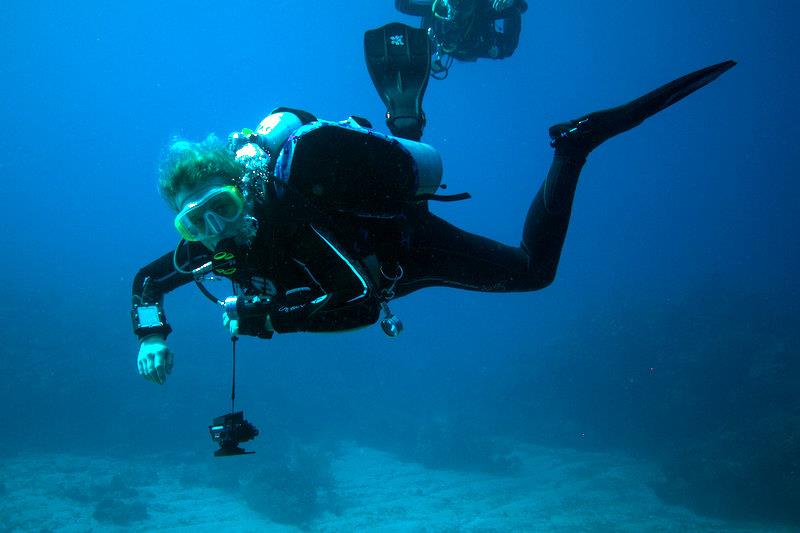
We began offering Progressive Doing it Right based (DIR Diving) training and equipment, including the offering of backplates to new open water sport divers a part of basic training and introducing recreational divers to the long hose/short hose regulator configuration or the Hogarthian method of diving.
In 2007 we began offering more modern and progressive Sidemount training. We are happy to be offering training on several different rebreather configurations, especially the modular and most versatile machine on the market, White Arrow Explorer Rebreather System, capable of any configuration.
Every recreational diver can benefit from our experience, the new skills that we offer and every day diving techniques that we introduce from basic open water programs. Horizontal Trim, Buoyancy, Team Awareness, S-Drills, Bubble Checks, SMB Deployments, Air Sharing horizontally in neutral buoyancy with a long hose regulator, Team Diving Protocols and more.
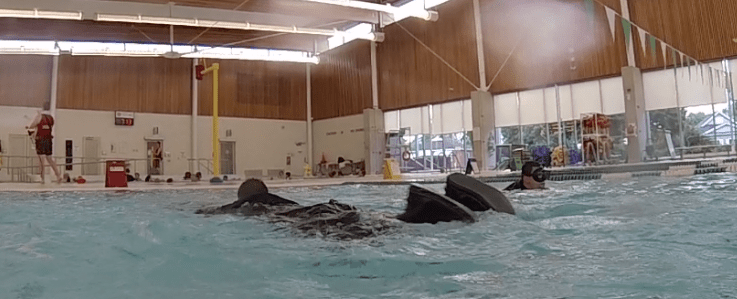
While not every diver is introduced to this from every instructor around the world, we also offer Foundational training to start experienced divers off right as well, as many of the concepts we teach aren’t taught elsewhere unless the divers have been taught by a certified cave or technical instructor. At the end of the day we want everyone to learn to be better and dive with more confidence, comfort and awareness, so we offer workshops like NTEC which is a great way to prime yourself to learn the foundational skills you should know in a class and pool setting showing you a better way to do things in the right gear. This also prepares you for a glimpse into your diving future should you want to progress towards Wreck Diving, Cavern or Cave, Ice, Technical and more.
Our experience in expeditions and exploration projects have also helped shape our divers into the best divers in the water.
Get More Technically Correct
When a diver starts to get more “technical” it helps them become a more complete diver. It doesn’t mean they have to aspire to achieve a new super deep world record sort of depth where they hang for hours on decompression stops, however, it does break through the misconceptions, boundaries of conventional training and opens you up to a lifetime sport with the ability to go anywhere with your diving.
We believe Technical Diving is simply extending your range both with respect to knowledge, but also extending the scope of your abilities beyond what is known and offering new challenges along the way.
Our NAUI Intro to Tech Course has been called the “Best Dive Course” by nearly everyone who’s taken this amazing foundational skills class. Regardless of whether a student completes the course successfully the first time or not, “Intro” is where better diving begins.
Our Intro course begins with the tightening up of the divers buoyancy and trim, cleaning up and streamlining the entire equipment configuration, introducing new surface protocols and pre-dive regiments like safety drills, SADD checks, Bubble Checks and Heat to Toe checks which improve safety and awareness.
Intro also begins to stress the team concept of diving, which is something talked about but rarely enforced in traditional recreational diving. We introduce the benefit to 3 person buddy teams, which are often taboo in traditional training as well, as we believe a second set of hands to help and eyes to see are very important should a diver require assistance.

After classroom sessions are complete students are introduced to a combination of dry land surface drills that allow the instructor to demonstrate skills such as trim, fin kicks, flat horizontal body posture, air shares, valve shutdowns, diver rescues, lift bag deployments and many other skills topside as they can talk about each skill attribute and show it off before the students are expected to demonstrate it both on the surface and then the skills are executed by instructors and students under the water in a shallow pool or confined water area suitable for this sort of training. Upon successful completion of the pool sessions candidates are then taken to open water and will complete all skills in a shallow open water environment where No Stop Times are not an issue.
During Intro to Tech a staff member will video record the students skills throughout the program so they can break down their progress frame by frame and discuss thoroughly throughout the course dives in debriefing sessions.
Students love the fact that this style of training is done intensively as repetition helps them improve and learn at a quicker rate, especially upon review of each dive during de-briefing when we break down all of the skills done that day with video review.
Through clear and concise de-briefings the students know exactly what it is they need to work on and how to improve as we take corrective action with them and continue to show them how to properly execute each skill breaking down the skills as clear and concise as possible.
Just the Beginning
Many divers love the challenge that Intro brings and those divers who work hard and succeed will enrol in their next challenge.
Divers will be using more equipment which creates a need for better fitness, stiffer fins, stronger dive abilities and confidence.

Intro to Tech is a stepping stone to bring divers more safely into the realm of deeper diving or overhead environments as the foundational skills and trim learned here ensure that those divers are going to be able to perform the rudimentary skills like horizontal buoyancy, frog kick, modified frog kick and to be able to fin backwards for 10′ without hitting the bottom or silting out the dive site because Zero Impact Diving is such am important skill to possess as it saves the reef, fragile clay patterns, maintains the water clarity (especially in a wreck or cave where a diver will have to navigate safely back out of a zero visibility environment) and makes the diving more pleasurable for all. The other important skill is something we teach at Open Water and again at Advanced Open Water and Intro to Tech, which is being able to deploy and send an SMB up to the surface ascending on a reel stopping every 10′ and then ascending to 15′, 12′, 9′, 6′, 3, surface many of those divers will engage in their next adventure.
Intro to Tech is simply the holy grail of recreational diving because you see what is lacking when you compare it to someone who’s been coaxed into taking a different more traditional Master Scuba Diver sort of approach. Rather than being taught to dive properly, most divers are taught to pay for an instructors time, a paper manual and a plastic certification card. While there are some phenomenal recreational specialty courses (Nitrox, Equipment Specialist, DPV, Cavern, Drysuit) most dive stores don’t have the talent or the ability to teach some of these more useful classes and favour a quick payout instead of committing their divers to more in-depth training.
The most popular courses Intro graduates challenge themselves next with range from Wreck Penetration to a Cavern/Cave 1 class, DPV class, Technical Decompression with Helitrox (Tech 1) Advanced Nitrox/Decompression Procedures.
Growing Your Experience
Regardless of the certification level a diver achieves it requires regular diving to maintain that level of proficiency and regular dives to that highest level of certification. We usually recommend 20-25 dives annually at that level before moving to the next level.
At DDS, We are NOT a certification factory that tries to push our divers from Intro to Tech to Trimix Rebreather in a month. It’s not about numbers, its about the quality of the diver and those divers that are making poor choices have no real world underwater dive skills and often lose buoyancy, panic or are a complete embarrassment to the sport.
 DDS Divers are some of the highest trained divers in the country and they show a lot more finesse and discipline than most. Those divers who choose to work hard and grow their diving abilities are often asked to join in on bigger, better dives, as well as for support projects both local and abroad.
DDS Divers are some of the highest trained divers in the country and they show a lot more finesse and discipline than most. Those divers who choose to work hard and grow their diving abilities are often asked to join in on bigger, better dives, as well as for support projects both local and abroad.
Expedition projects are conducted yearly and it’s always great when new members can be integrated into the Divers Edge family, which is our training and exploration group. We have partners worldwide through several organizations that we do international projects with for caves and shipwrecks.
Get Involved
Regardless of your goals the key in anything is to keep involved and dive with divers who share the same views and the same goals in training and equipment.
We have taught and continue to teach divers from around the world and are more than willing to put on a presentation for groups, clubs, other shops as we’ve been doing for decades.
If you’d like to get involved and benefit from better training, equipment configuration and future diving opportunities, reach out and let’s get you involved with DDS Today.
We have trips, charters, training year round. Your first step is to reach out and make contact, the rest comes easily from there.
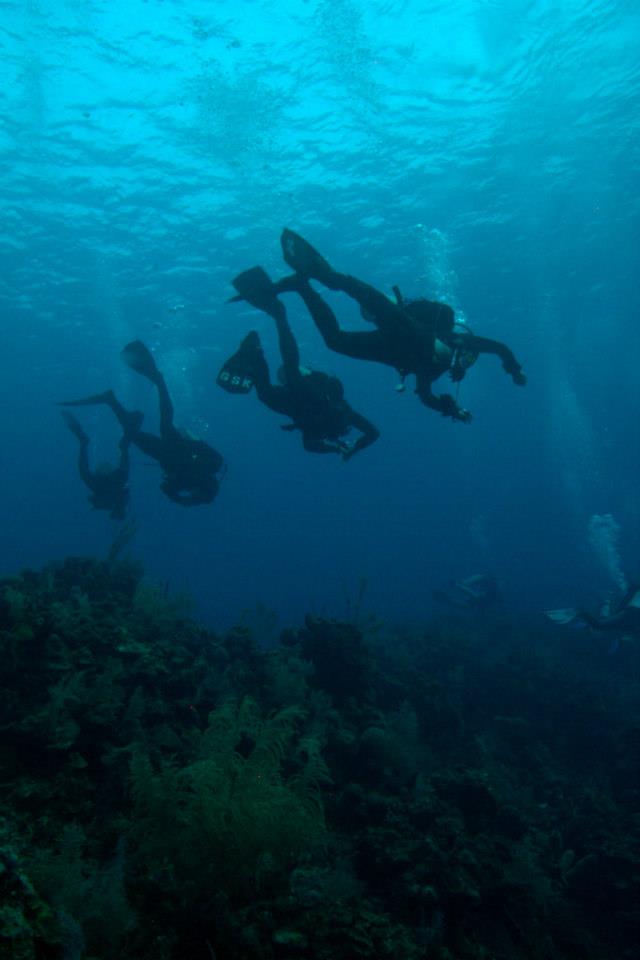
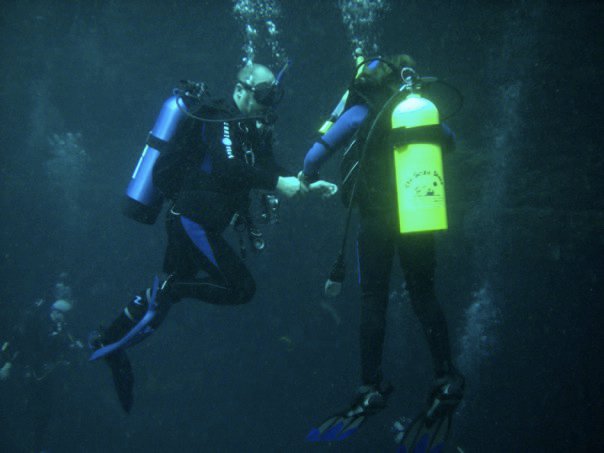
 Divers diving in Canada with a single tank often times use a stainless steel backplate with a weighted single tank adapter, that system has a total negative buoyancy weighting of approximately 10lbs. Nearly enough to sink anyone in a 7mm wetsuit with 2-3lbs maximum per side additional, however a drysuit diver is going to require an additional 6-8lbs minimum depending on the undergarments they wear.
Divers diving in Canada with a single tank often times use a stainless steel backplate with a weighted single tank adapter, that system has a total negative buoyancy weighting of approximately 10lbs. Nearly enough to sink anyone in a 7mm wetsuit with 2-3lbs maximum per side additional, however a drysuit diver is going to require an additional 6-8lbs minimum depending on the undergarments they wear.





